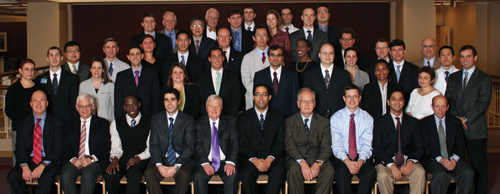More Hype Than Substance in Laparoscopic and Robotic Techniques; Open Prostatectomy is Best
Open nerve-sparing radical retropubic prostatectomy (RRP) is the gold standard for the surgical treatment of prostate cancer.
For patients, the most important outcomes are: Am I cured of my cancer? Am I continent? Can I have erections sufficient for intercourse? Will I have postoperative complications? How long will it take for recovery?
The answers have been well documented for RRP, and the long-term results show that high-volume surgeons generally achieve excellent outcomes.

Hype
Recently, laparoscopic (LRP) and robotic-assisted laparoscopic radical prostatectomy (RALP) have been accepted in the United States, to a large extent as a result of “hype” and marketing.
Reports from scientific studies comparing open with laparoscopic procedures have just begun to be published.
Several credible current studies suggest disadvantages of the minimally invasive surgical approaches in achieving cancer control, urinary continence, and patient satisfaction. Other studies call into question whether laparoscopic and robotic approaches offer material advantages in terms of side effects or recovery time. Both physicians and the public should be aware of these studies.
Study Results
In 2008, a study (Hu et al, Harvard) reported a comparison of men who underwent open or minimally invasive surgery.
Men undergoing minimally invasive surgery were more than 3 times (27.8% vs. 9.1%) more likely to require salvage therapy for tumor recurrence within 6 months. Even those treated by the highest-volume minimally invasive surgeons were twice as likely (18%) to require salvage therapy.
In addition, strictures (narrowing of the reconnected urethra) were also 40% higher with minimally invasive surgery.
In a 2009 study, (Hu et al) men undergoing laparoscopic/robotic surgery had a shorter hospital stay and fewer miscellaneous complications, but they had more urologic complications, incontinence, and erectile dysfunction and more need for postoperative radiation and/or hormonal therapy for recurrence.
Also, in 2008, a study (Touijer et al, Memorial Sloan-Kettering) reported that patients treated with laparoscopic surgery were significantly less likely to regain continence than those treated with open prostatectomy. They also had a higher rate of emergency room visits, readmissions, and further surgery for complications.
Another study (Schroeck et al, Duke, 2008) reported that patients treated with RALP were 4.45 times more likely to regret their decision than patients treated with open surgery, possibly because of higher expectations from an “innovative” procedure.
Commenting on this study, Sara Parker-Pope wrote in her New York Times blog (Well, August 27, 2008), “The research… is the latest to suggest that technological advances in prostate surgery haven’t necessarily translated to better results for men on which it is performed. It also adds to growing concerns that men are being misled about the real risks and benefits of robotic surgical procedures used to treat prostate cancer.”
Regarding postoperative recovery, another study (Nelson et al,Vanderbilt) reported that patients treated with robotic and open surgery recovered on essentially the same clinical pathway. Similarly, another study (Wood et al, Michigan) reported that short-term post discharge recovery, including time to normal and full activity, driving, and post discharge narcotic use was comparable between robotic and open radical prostatectomy.
Handling Bleeding
Less bleeding with laparoscopic or robotic prostatectomy is often reported in comparison to open prostatectomy. In general, it’s accurate and is one of the reasons that surgeons who are less experienced in preventing bleeding can perform a laparoscopic radical prostatectomy without severe blood loss. (See Reducing Blood Loss in Open RRP on page 14 of this QUEST.)
However, with proper surgical technique, the difference in the rate of transfusions of someone else’s blood in both operations is not significant. Still, some bleeding is inevitable with all forms of prostate cancer surgery. And in laparoscopic or robotic surgery, a harmonic scalpel or electrocautery is frequently used near the neurovascular bundles when there is bleeding. These nerves can suffer irreversible thermal damage if the heat is too close to them.
Thus, if the surgeon dissects widely to encompass the cancer, the nerves get “fried,” and if the surgeon dissects too close to the prostate to spare the nerves, there is risk of cutting into the prostate or leaving prostate tissue behind.
Nerve-Sparing
In a 2010 study (Harvard’s Brigham and Women’s Hospital), when nerve-sparing surgery was attempted (by high-volume surgeons), the positive surgical margin rate (cancer at the edge of the removed tumor specimen) was 78% higher with robotic surgery than with open surgery.
Another 2010 study based on a survey of urologists in the central United States (Lee et al) reported, “Many urologists still feel an oncologic difference might exist between open and robotic surgery.”
Other disadvantages come into play as well, such as lack of tactile feedback with robotic prostatectomy where the surgeon is unable to feel the prostate and surrounding tissues and has no appreciation of whether the tumor is invading into the neurovascular bundles or how readily the prostate separates from the neurovascular bundles and other surrounding tissues.
Dr. Patrick Walsh of Johns Hopkins, who developed nerve-sparing prostatectomy, stated: “Visual and tactile assessment during open surgery by an experienced surgeon provides valuable information on when and where it is safe to preserve the neurovascular bundle.”
Experience Counts
General consensus is that the most important factors in successful treatment of prostate cancer are early diagnosis and the surgeon who performs the surgery.
The results are well documented for open prostatectomy with an experienced surgeon; the jury is still out with laparoscopic/robotic prostatectomy. So far, much of the important evidence suggests that open prostatectomy is best.
I do not believe that the laparoscopic or robotic procedures are established as a safe cancer operation as compared to open prostatectomy, and I do not believe that nerve sparing can be as readily or safely accomplished.







